
You should upgrade or use an alternative browser.
[Tutorial] Install Windows 10 for ARM32 on your Surface RT
-
Thread starterkephax
-
Start date
-
#1
It is not complete yet. I will be adding files and more clear instructions slowly.
Do this at your own risk. Your device may be bricked. I am still not sure if the SecureBoot fix should be executed on 8.0 or 8.1
# How to Install Windows 10 on the Surface RT #
2020/02/16 kephax
Download complete tools: [will upload]
Download temporary link in attachments
## 0. Restore Windows 8.1
1. Turn the Surface Off
2. Insert this USB stick in the Surface
3. Press Volume Down and Power
4. The Recovery menu will start
5. Troubleshoot > Advanced Options > Command Prompt
6. Type: «restore.cmd» (this will whipe the whole disk, repartition it and install the Windows 8.1 image) (this will take a while)
## 1. Unlock Secure boot ##
1. Run Disable_UAC.reg
2. Start > Regedit > HKEY_LOCAL_MACHINE\BCD00000000″ > Select «BCD00000000» > Click on file and select «unload hive»
3. Copy SecureBoot to Desktop > Open it > Run «InstallPolicy.cmd»
4. Restart
5. Start > cmd (as Adminstrator) > PostInstallPolicy.cmd
6. Restart
## 2. Install Windows 10 ##
If you don’t have a message «Secure boot» in the bottom right corner then retry step 1
1. Turn the Surface Off
2. Insert this USB stick in the Surface
3. Press Volume Down and Power
4. The Recovery menu will start
5. Troubleshoot > Advanced Options > Command Prompt
6. Type: «script.cmd» (this will whipe the whole disk, repartition it and install the Windows 10 image) (this will take a while)
7. When restarting you will get an error popup: Press SHIFT+F10
8. Type Regedit and go to KEY_Local machine/SYSTEM/Setup/Status/ChildCompletion > setup.exe > Modify the value to «3»
9. Restart
### 2.1. How to activate Windows
1. Powershell
slmgr.vbs /upk
slmgr /ipk NPPR9-FWDCX-D2C8J-H872K-2YT43
slmgr /skms kms.03k.org
slmgr /ato
slmgr /skms zhang.yt
### 2.2 Install runtime
1. Copy APPX1 from Recovery USB to Desktop
2. Desktop\APPX1\APPX1.ps1 > Right click > Run as Administrator
3. Restart
4. Desktop\APPX1\AppxBundle.ps1 > Right click > Run as Administrator
5. Restart
6. Install:
Microsoft.windowsStore.appxbundle
Microsoft.NET.Native.Framework.1.1.appx
Microsoft.NET.Native.Runtime.1.1.appx
## 3. After installation ##
### How to remove Expired version popup ###
1. Go to C:\Windows\System32
2. Right click on LogonUI.exe > Properties > Security > Advanced
3. Ower > Change
4. Enter your username > Check Names
5. Close all dialog boxes
6. Now rename the file to LogonUIbak.exe
### How to change the language to English (and remove chinese) ###
Start > Settings > Time & Language > Region & Language
Remove chinese and set English as Default
### How to install uBlock Origin on Edge ###
1. Download this:
2. Edge > about:flags
3. Select: «Enable extensions developer features»
4. Select the «…» > Extensions > Load Extension
5. Select the folder with uBlock Origin (this should be on the Surface itself)
### How to install UWP applications ###
1. Find your application here:
https://www.microsoft.com/en-us/store/b/home
2. Copy the URL and copy it here:
https://store.rg-adguard.net/7
3. You will need to find here the .appxbundle ARM and sometimes also the dependencies. Sometimes when you download the file it does not have the extension, so rename the file to .appx in the end.
4. Install first the dependencies then the application on the Surface RT
## 4. Pictures
Attachments
Last edited:
-
#2
-
#3
-
#4
-
#5
Some useful informations I learned through the process:
1) Initially I used the recovery image for my language downloaded from Microsoft, and with this image I wasn’t able to enable test mode after installing the secure boot policy. I tried the chinese image provided on Yandex (links are in other threads on this forum) and it worked on first try, so use that!
2) Even after enabling Test Mode, if you run the command Confirm-SecureBootUEFI in powershell, it still gives you True as result. I was worried that Secure Boot wasn’t really disabled but I was wrong. To confirm that secure boot is disabled you have to enter the command prompt via recovery image and check the right corner of the screen if it says «secure boot is not configured correctly» or something like that. In that case, you can install W10 safely.
3) Some guides are wrong about the file you have to rename to remove the warning about the expiration of the build. The right file is LicensingUI.exe, not LogonUI.exe! LogonUI.exe is responsible for the login interface, if you rename it you won’t be able to login on the next reboot, so pay attention!
4) Office 2013 is not activated for me, I tried to install the provided licences many times, but nothing. It seems to work anyway though. There’s something I missed?
To be completely satisfied I need:
— a working version of the Crunchyroll app, the one in the store requires a newer build, anyone know how to find it?
— MSN Weather for W10, the one provided is the old W8 app.
— Ad blocker for Edge, someone wrote about sideloading uBlock but didn’t share the files.
-
#6
-
#7
Does the office 2013 work? I installed it on my Surface RT with the Windows 10 build but it says that it only works on qualifying versions on windows and editing is disabled…
I was able to install it and getting working 100%…… there’s another tread that’s for installing windows 10 on surface 2 tablet and there’s a link in the OP for a mega folder that contains the office 360 files and in it a file that edits the registry
-
#8
-
#9
Speaking of the Store, I found a bug, at least for me: the install button works only for the apps you already own. So, if you want to install an app you never downloaded, you have to acquire it first on another PC and then on the Surface RT.
-
#10
I installed it but however, it won’t install any app because of a licence problem probably…
(The older store worked but it does not include all of the apps for example myTube)
-
#11
-
#12
If everything goes wrong can I just download a recovery image for 8.1 and install it again?
If everything goes wrong. Just boot from the recovery USB stick and reimage the Windows 8.1 using the same dism apply image method.
-
#13
-
#15
-
#16
Ok so I’m attempting to follow this tutorial and the other one for my original surface rt. Where is the wim for windows 10? Those instructions don’t seem clear to me, or am I supposed to use the surface 2 image?
The wim is in that folder https://yadi.sk/d/mnCUeGKWm1XTXA
-
#17
Ok I see. I ran into a different issue. I went to do the Windows 10 install today but to my surprise, I couldn’t boot up. Luckily I still had my Windows 8.1 Full Recovery USB. But, for for some reason from the advanced troubleshooter, it tells me my USB device is invalid. Has anyone run into this before?
-
#18
-
#19
Can be updated to Windows 10 version 1909?
Of course not, the only build of ARM32 Windows 10 we have is this one, and it’s leaked.
-
#20
I would like to know if the cameras work in windows 10? Thanks so much!
Similar threads
May 15th 2020
September 16th 2021
Alexenferman
⚠ WARNING:
Alexenferman, Google, Microsoft, XDA Developers, are not responsible for any damages or bricks made to your device. Please do some research if you have any concerns about this installation, the leaked Windows 10 build, features and downsides. You are choosing to make these modifications, you should blame yourself for any mistakes you make. Once installed, the partition 4 of the drive (i.e. C:) will be completely wiped. Make sure you backed up all of your data to another drive or on a computer.
Do not install Windows 10 unless you have followed very carefully the tutorial and have Secureboot disabled! Not disabling Secureboot properly might lead to a unrecoverable soft bricked device as reported by some members.
The download links associated to Yandex Disk are not owned by Alexenferman. The files can be changed at any moment by its owner without further notice. If a file in question is not accessible, please leave a comment below.
BEFORE STARTING
Please read the warning very carefully. You understand that you are responsible for any damages made to your device.
Frequently asked questions
A lot of people have asked the same questions, so here are some of the questions and answers: FAQ: Windows 10 on the Surface RT
You will need:
- Surface RT or Surface 2
- USB Flash drive (Minimum 8GB)
- Keyboard (USB Keyboard or Surface Keyboard
- Basic familiarity with the command prompt (cd / del / file.exe)
Identifying the Surface tablet generation
There are 2 different models of Surface tablets running Windows RT. You must know the model of your tablet to get the appropriate files for it. Turn your tablet around to see the colour of the metal back cover. The left one is the Surface RT and the right one is the Surface 2.
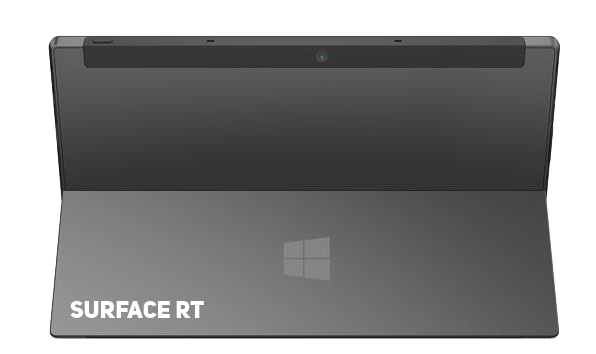
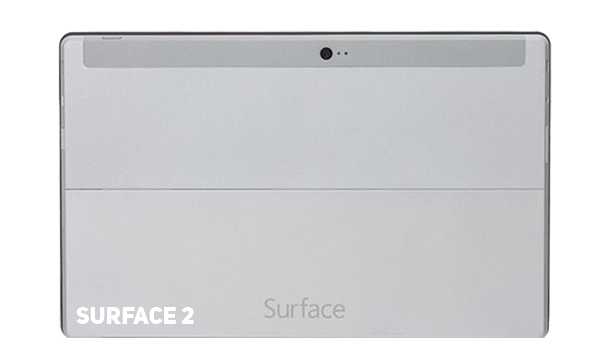
Download Options
There are different ways to get your files. You don’t have to download them now, as the tutorial will link you to the files when they will be necessary.
Yandex disk: Due to the recent addition of the «Download limit exceeded» message, Yandex Disk is no longer a viable option to download files from. Instead, a Google drive mirror will be offered.
RT Drive (Google Drive)
PART 1: PREPARING THE INSTALLATION
Creating a USB recovery drive
On your Surface RT, Click Start and click on the search icon, type «Create Recovery Drive» and select the search result. You may be asked to enter an administrator password or confirm your choice.
After the tool opens, make sure that «Back up system files to a recovery drive» is not selected, and then select «Next».
Make sure that «Back up system files to a recovery drive» is not selected. If you do not disable this option, it will cause errors in the future.
Connect the USB flash drive to your computer, select it, and then select «Next».
Select «Create». A large number of files need to be copied to the recovery drive, so it may take some time to complete.
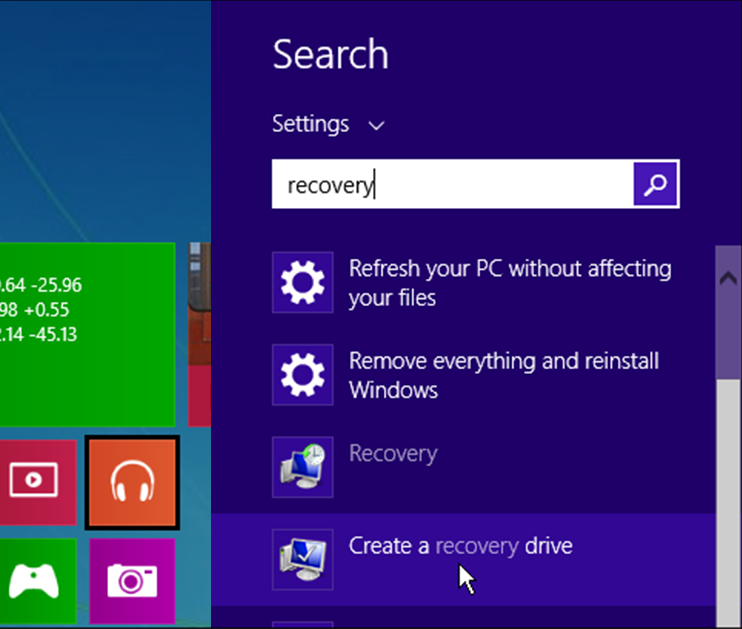
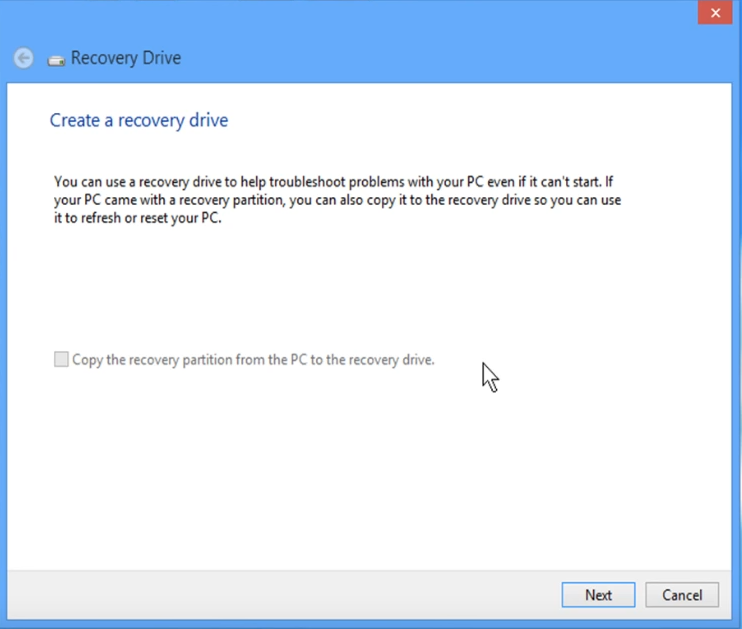
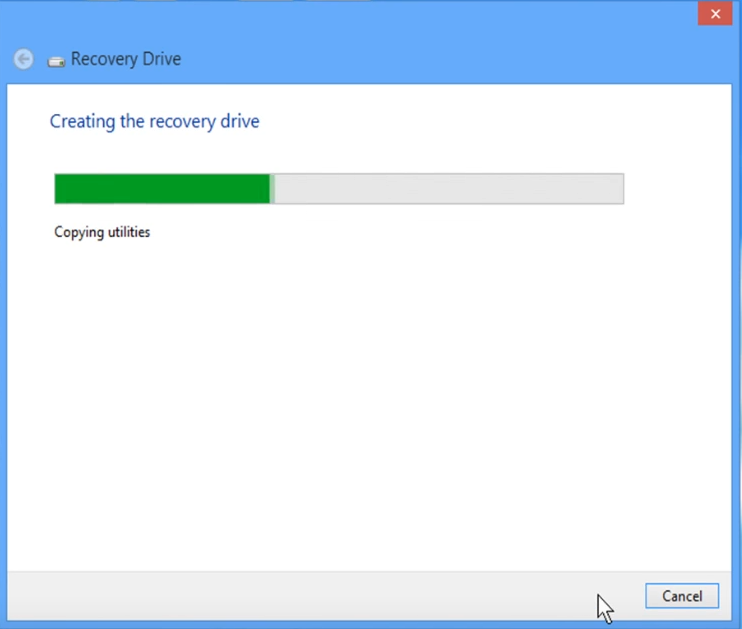
It’s time to download the install.wim file. Download the one for your specific device. (Surface RT or Surface 2)
Make sure to download the correct file for your specific device. By installing the wrong image, you will not be able to get past the setup screen.
Windows RT Surface 1 (RT).wim
Windows RT Surface 2.wim
Mega.nz Mirrors: Windows RT Surface 1 (RT).wim and Windows RT Surface 1 (RT).wim
To make the installation process easier, rename the downloaded file to «install.wim».
Copy the install.wim to your flash drive.
PART 2: INSTALLING THE PATCHED WINDOWS RT IMAGE
Basically, this patched Windows image is necessary since it has Bitlocker disabled and updates that patch the secureboot vulnerability are not installed, which allows you to take advantage of the exploit to partially disable secureboot.
Entering Recovery mode
Make sure Surface is turned off.
Plug the USB drive in the USB port of the tablet.
Hold the volume down button and press the Power button once.
When the Microsoft or Surface logo is displayed, release the buttons.
After seeing the prompt, select English US.
Select «Troubleshooting», «Advanced Options» and «Command Prompt»
If prompted for a recovery key, select «Skip this drive» at the bottom of the screen.
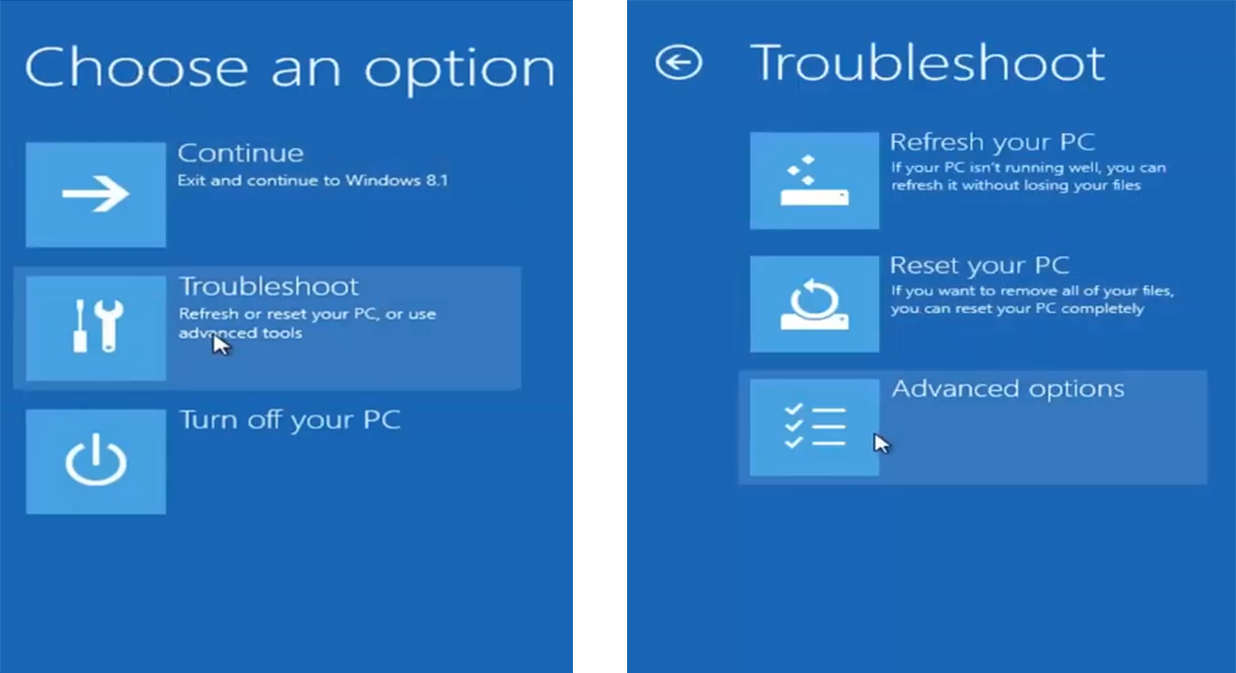
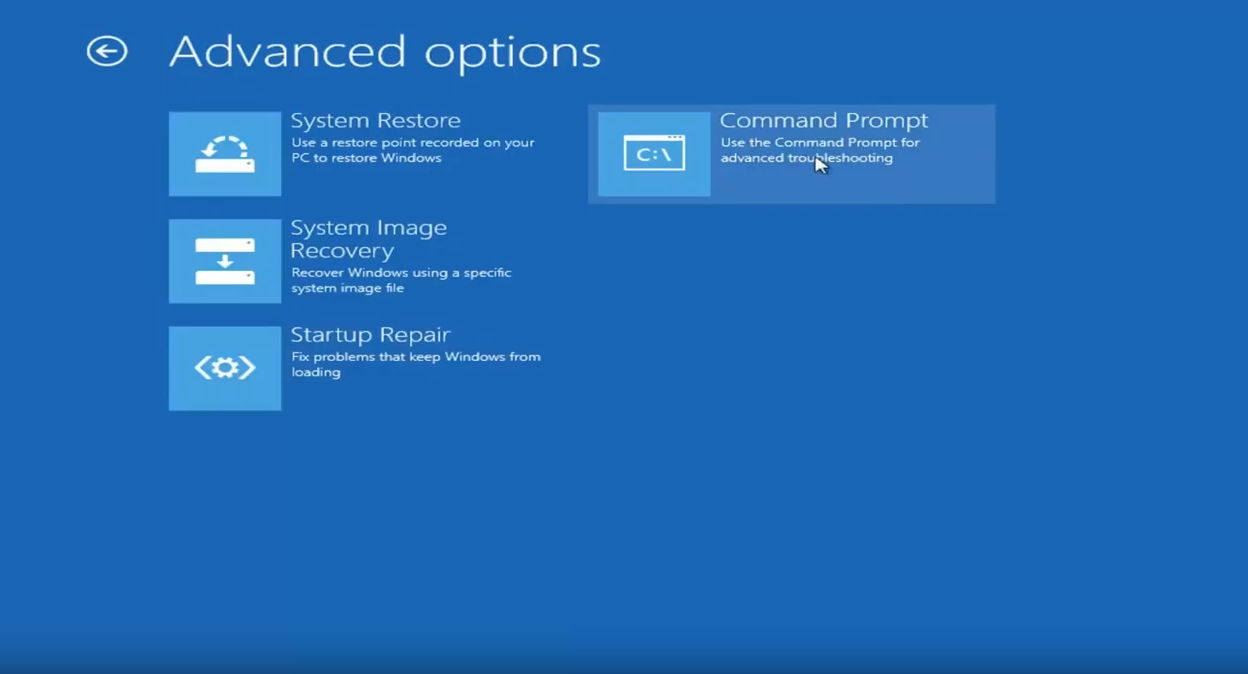
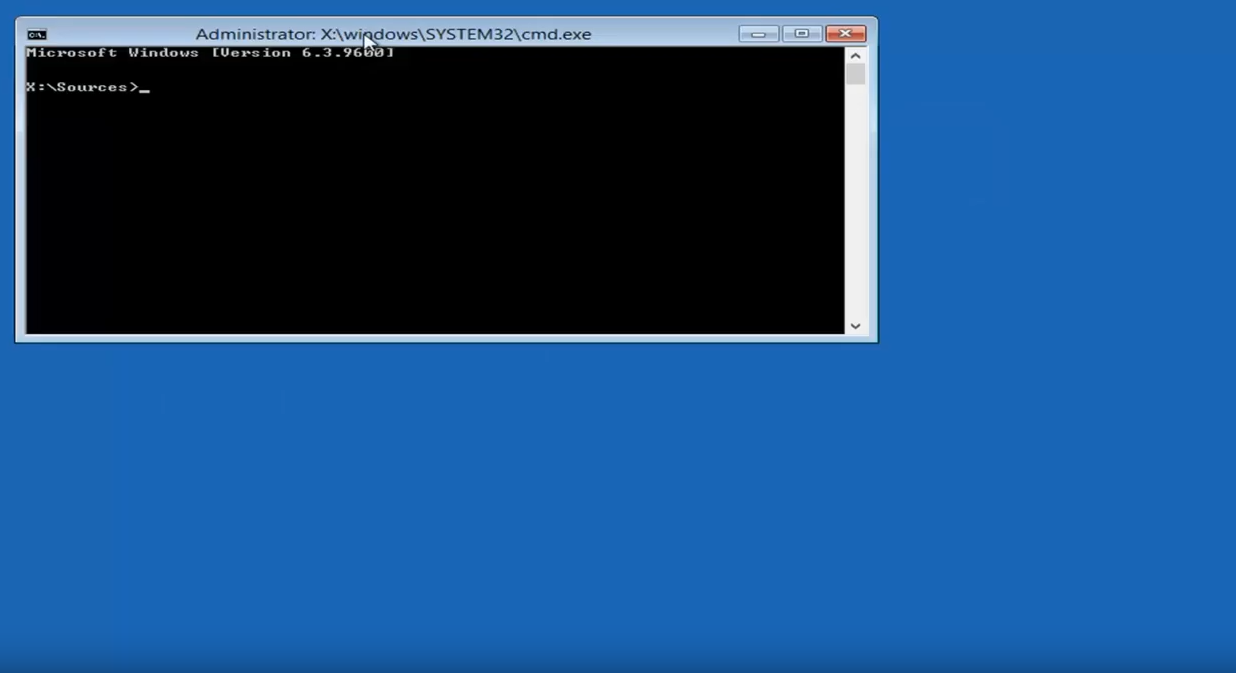
Formatting partition 4
In the command prompt window, type the following commands:
diskpart
sel dis 0
sel par 4
for quick fs = ntfs override
exit
Installing the patched Windows RT image
In the command prompt window, type the following command:
dism /apply-image /imagefile:[DIRECTORY] /applydir:c: /index:1
[DIRECTORY]: Replace this path with the path of the install.wim we copied to the drive.
Example: dism /apply-image /imagefile:d:\sources\install.wim /applydir:c: /index:1
Restart your tablet
Setup the tablet quickly, do not set any Microsoft account, do not connect to the internet.
For Surface 2 users, Windows will be in Chinese. Use Google translate with the camera function. You can change the Windows language in the Settings app.
Once you are done, open file explorer and click on «This PC»

If the C: drive does not have a lock icon, you successfully cracked Bitlocker and have installed the patched Windows 8.1 image!
PART 3: DISABLING SECUREBOOT
Disabling UAC
Download the disabling_uac.reg file.
Disabling_UAC.reg
Mega.nz Mirrors: Disabling_UAC.reg
On your Surface RT, run this file as an administrator.
Restart your tablet.
Modifying Registry keys
Open the registry editor
Navigate to HKEY_LOCAL_MACHINE \ BCD00000000
Make sure that the folder BCD00000000 is selected and click [File], [Unload/Uninstall Hive]
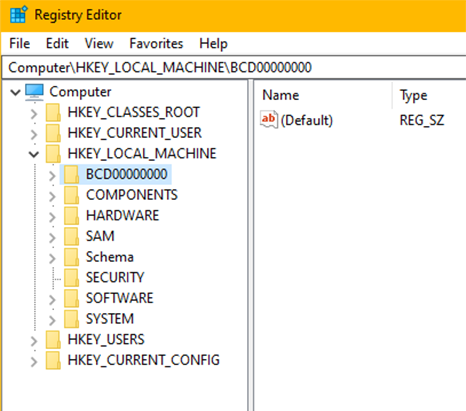
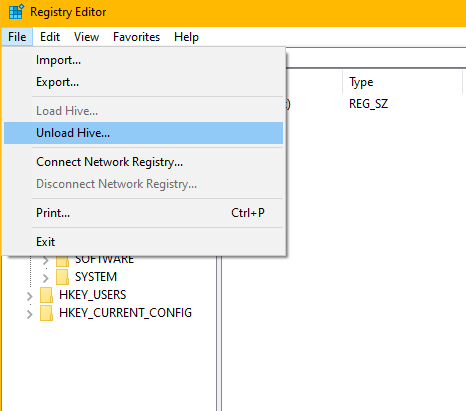
Installing the Secure Boot Debug Policy
Download the following file:
SecureBootPatch.zip
Extract the SecureBootPatch.zip and transfer it in the internal storage of the device.
Right-click the InstallPolicy.cmd and click «run as administrator».
Restart your tablet.
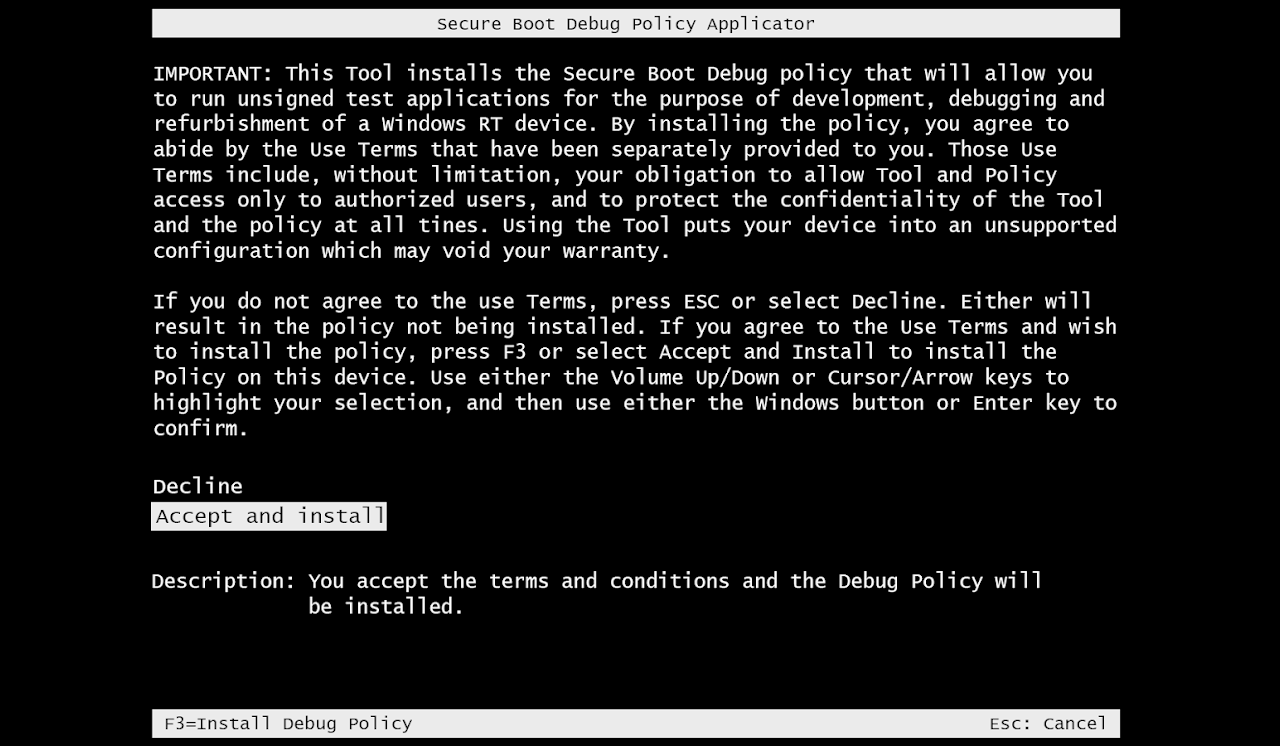
After restarting, you will see a «Secure Boot Debug Policy Applicator» screen.
Using the Volume buttons, select the option «Accept and Install»
Press the Windows button to select the option.
If you see the Windows boot manager error 0xc000000f instead, follow these steps to fix it and come back here
Installing the Secure Boot Debug Policy
Run the command prompt and enter:
bcdedit /set {default} testsigning on
bcdedit /set {bootmgr} testsigning on
bcdedit /set {default} NoIntegrityChecks Yes
Restart your tablet.
If you see an error after applying the commands, follow these steps to fix it and come back here
If your Surface does not turn on anymore, follow these steps to fix it and come back here
To make sure that you have disabled Secure Boot (VERY IMPORTANT)
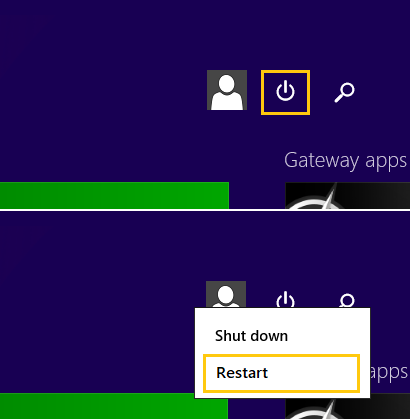
Click Start
Plug in a USB keyboard or your Surface keyboard
Click on the power icon on the top right part of the start menu
Press shift on your keyboard and at the same time click on restart
It will go into the recovery mode on the tablet (not the USB recovery)
Select «Troubleshooting»
Select «Advanced Options»
Select «Command Prompt»
It might ask for a password. Leave it empty and click on next.
You should see this text at the bottom right of the screen:
If you see this, you can now proceed to part 4!
Otherwise, if you don’t know what you did wrong, you can repeat Part 3.
You must make sure that Secure Boot is actually disabled before proceeding! Do not skip this step, otherwise, if you do not disable secureboot, your Surface RT might refuse to boot anything at all! By this stage, Alexenferman, Google, Microsoft, XDA Developers, are not responsible for any permanent damages or bricks made to your device. You are choosing to make these modifications, you should blame yourself for any mistakes you make. You have been warned!
PART 4: INSTALLING WINDOWS 10
It’s time to download the Windows 10 install.wim file. Download the one for your specific device. (Surface RT or Surface 2)
Make sure to download the correct file for your specific device. By installing the wrong image, you will not be able to get past the setup screen.
Windows 10 Surface 1 (RT).wim
Windows 10 Surface 2.wim
Mega.nz Mirrors: Windows 10 Surface 1.wim and Windows 10 Surface 2.wim
To make the installation process easier, rename the downloaded file to «install.wim».
Copy the install.wim to your flash drive.
NOTE: you can delete the old Windows 8 install.wim on your flash drive if the storage space is getting low. You will not need it anymore.
Entering Recovery mode
Make sure Surface is turned off.
Plug the USB drive in the USB port of the tablet.
Hold the volume down button and press the Power button once.
When the Microsoft or Surface logo is displayed, release the buttons.
After seeing the prompt, select English US.
Select «Troubleshooting», «Advanced Options» and «Command Prompt»
If prompted for a recovery key, select «Skip this drive» at the bottom of the screen.



Formatting partition 4
In the command prompt window, type the following commands:
diskpart
sel dis 0
sel par 4
for quick fs = ntfs override
exit
Installing Windows 10 image
In the command prompt window, type the following command:
dism /apply-image /imagefile:[DIRECTORY] /applydir:c: /index:1
[DIRECTORY]: Replace this path with the path of the install.wim we copied to the drive.
Example: dism /apply-image /imagefile:d:\sources\install.wim /applydir:c: /index:1
Restart your tablet.
If you see a blue screen with error 0xc000000f or 0xc000428 instead, follow these steps to fix it and come back here
Booting up Windows 10
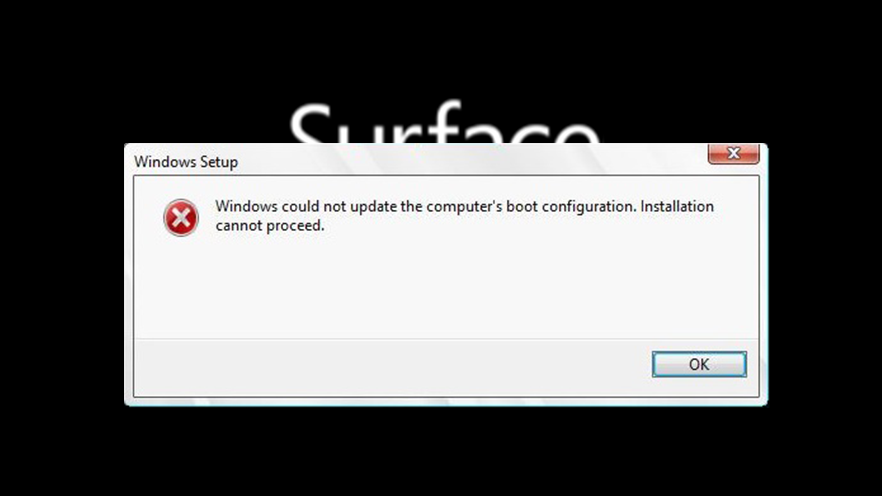
After waiting for a few minutes, you should see an error message. Don’t worry, this is normal.
Using a keyboard, press the following keys:
External USB keyboard: Press SHIFT + F10
Surface keyboard: Press FN + SHIFT + End
Type «Regedit»
Navigate to HKEY_Local machine/SYSTEM/SETUP/STATUS/ChildCompletion
On the right pane, right-click «setup.exe»
Click on «Modify»
Change the Value to 3
Click OK
On the error message, click on OK.
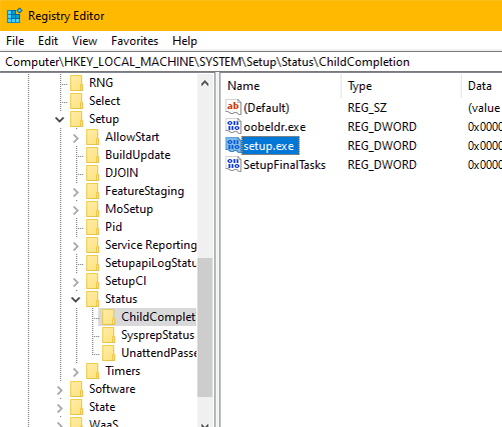
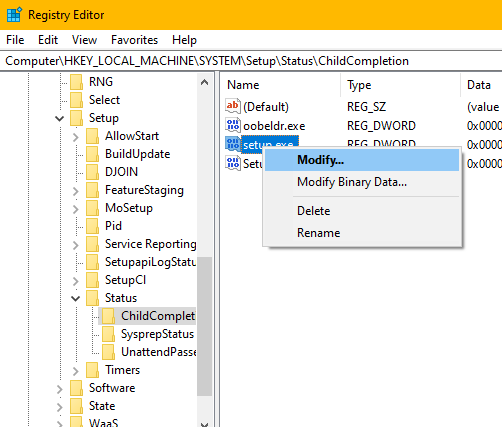
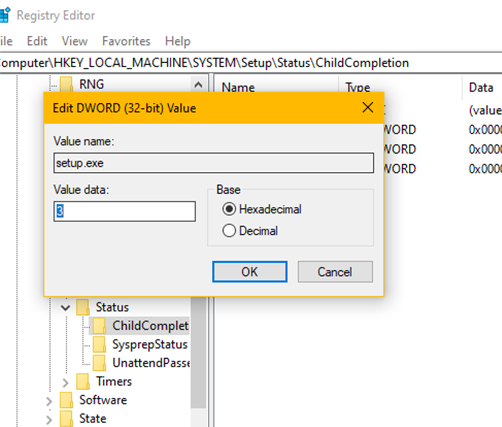
PART 5: SETTING UP WINDOWS 10
Setting up Windows 10 for the first time
Follow the instructions on the screen to setup Windows 10.
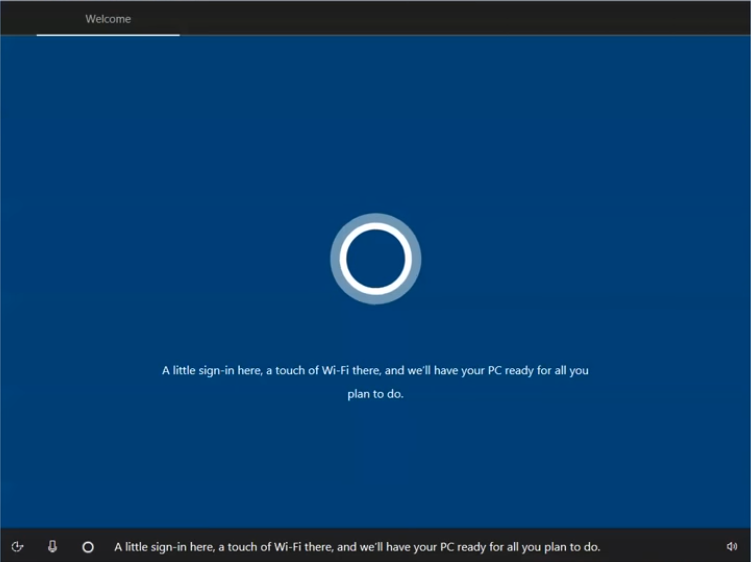
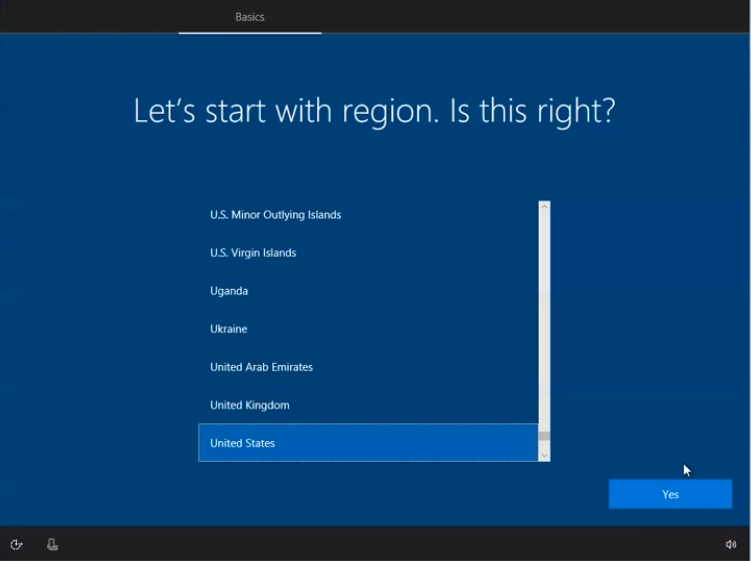
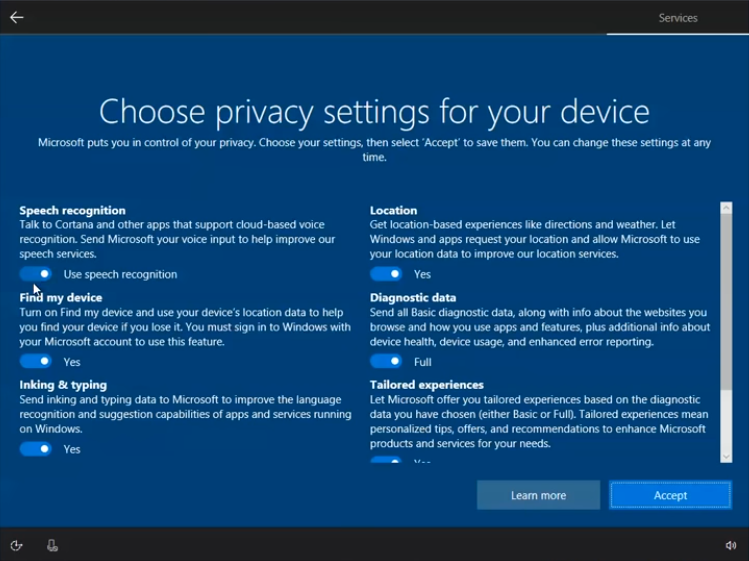
Activating Windows 10
Open Powershell and type:
slmgr.vbs /upk
slmgr /ipk NPPR9-FWDCX-D2C8J-H872K-2YT43
slmgr /skms kms.03k.org
slmgr /ato
slmgr /skms zhang.yt
Installing frameworks and programs
Download the following files:
APPX1.rar
Microsoft.NET.Native.Framework.1.1.appx
Microsoft.NET.Native.Runtime.1.1.appx
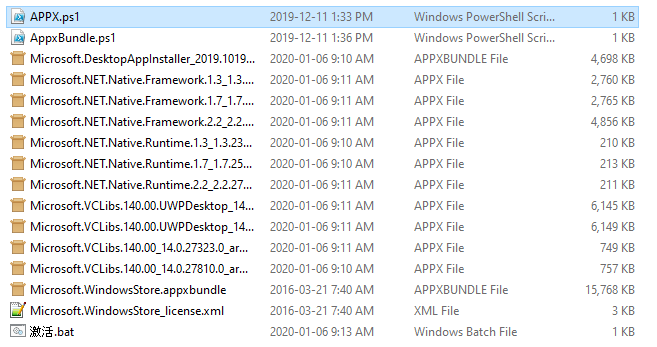
Extract APPX1.zip
Open the APPX1 folder
copy the files on the USB drive and copy them to the Surface RT internal storage.
Right-click Appx.ps1, select «run with powershell».
Right-click AppxBundle.ps1, and select «run with powershell».
From the other files downloaded, install the Microsoft.NET.Native.Runtime.1.1.appx and Microsoft.NET.Native.Runtime.1.1.appx packages by simply running them.
You are done!
EXTRAS
You may notice that the OS is quite bear bones, and might not have all of the Surface features. See this section to install App Updates, Office 2013, and fix a few issues. Visit Extras Section
ALTERNATIVE INSTRUCTIONS
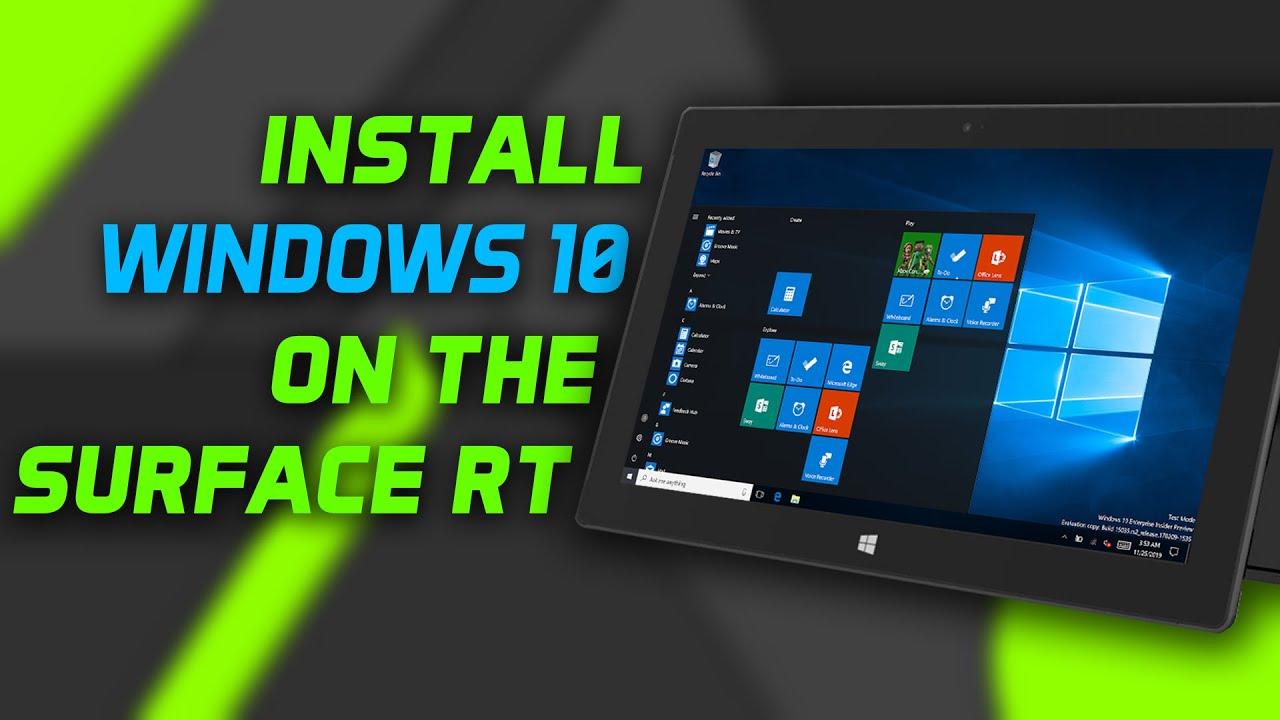
How to install Windows 10 on the Surface RT 💻
YouTube
13:28
Elektrohax
COMMENTS

Preparing Your Surface Rt 8.1 for Windows 10 Installation
If you own a Surface Rt 8.1 tablet and want to upgrade to Windows 10, you might be wondering how to go about it. Although Microsoft officially ended support for the Surface Rt series, there is a way to install Windows 10 on your device. However, before you start the installation process, there are a few important preparations you need to make. This article will guide you through the steps to prepare your Surface Rt 8.1 for a successful Windows 10 installation.
1. Backup Your Data
Before you begin the installation process, it’s crucial to backup all your important data on the Surface Rt 8.1 tablet. Since the installation process involves formatting the device’s internal storage, all existing data will be erased. To avoid losing any important files or documents, it’s recommended to create a backup.
You can backup your Surface Rt 8.1 by connecting it to a computer and transferring the files manually. Alternatively, you can utilize cloud storage services like OneDrive or Google Drive to store your data securely offsite. Make sure to double-check that all your important files are backed up before proceeding with the installation.
Additionally, it’s a good idea to take note of any installed applications or programs that you wish to reinstall after the Windows 10 installation. This can help you ensure that you have everything you need once the upgrade is complete.
2. Check System Requirements
Before attempting to install Windows 10 on your Surface Rt 8.1, it’s important to verify that your device meets the minimum system requirements. Windows 10 has higher hardware demands compared to Windows 8.1, so it’s crucial to ensure compatibility for a smooth installation and optimal performance.
| Minimum System Requirements for Windows 10 |
| — Processor: 1 GHz or faster |
| — RAM: 1 GB (32-bit) or 2 GB (64-bit) |
| — Storage: 16 GB (32-bit) or 20 GB (64-bit) |
| — Display resolution: 800 x 600 |
| — Graphics: Microsoft DirectX 9 or later with WDDM 1.0 driver |
Ensure that your device meets these requirements for a successful installation. If your Surface Rt 8.1 falls short on any of these specifications, it’s recommended to consider upgrading to a newer device that officially supports Windows 10.
It’s also important to have a stable internet connection throughout the installation process to download necessary updates and drivers. If you have a slow or unreliable connection, consider using an ethernet cable for a wired connection to ensure a smooth installation.
3. Update Surface Rt 8.1 Software
Prior to installing Windows 10, it’s essential to ensure that your Surface Rt 8.1 is running the latest software updates. This ensures that your device is up-to-date and prepares it for the upgrade process.
To check for updates, go to the Start menu, open the Settings app, and navigate to the «Update & Security» section. Click on «Windows Update» and select «Check for updates.» If any updates are available, make sure to install them before proceeding with the Windows 10 installation.
Keep in mind that the update process may take some time, depending on the number and size of the updates. It’s important to have patience and allow the updates to complete before moving forward.
4. Disable Secure Boot
In some cases, the Secure Boot feature on your Surface Rt 8.1 device may interfere with the Windows 10 installation process. To ensure a smooth upgrade, it’s recommended to temporarily disable the Secure Boot feature.
To disable Secure Boot, restart your Surface Rt 8.1 and press the «Volume Up» button repeatedly during startup to access the UEFI settings. Navigate to the «Secure Boot Control» section and disable the feature. Save the changes and exit the UEFI settings.
Keep in mind that disabling Secure Boot may leave your device slightly more vulnerable to certain security threats. Therefore, it’s important to re-enable Secure Boot once the Windows 10 installation is complete.
Installing Windows 10 on Surface Rt 8.1
Now that you have prepared your Surface Rt 8.1 for the installation of Windows 10, it’s time to proceed with the actual installation process. Follow the steps below to install Windows 10 on your device.
1. Download the Required Files
The first step is to download the necessary files for the Windows 10 installation on your Surface Rt 8.1 device. Due to the unconventional nature of this installation process, you will need to acquire specific files from a trusted source.
Search online for a trusted source that provides the required files for installing Windows 10 on Surface Rt 8.1. It’s important to ensure that the source is reputable and that the files are legitimate and secure.
Once you have found a trusted source, download the files to your computer. Make sure to save them in a location that you can easily access during the installation process.
2. Creating a Bootable USB Drive
The next step is to create a bootable USB drive that will allow you to install Windows 10 on your Surface Rt 8.1. This process involves creating a USB drive with the Windows 10 installation files.
To create a bootable USB drive, you will need a USB flash drive with sufficient storage capacity. It’s recommended to use a USB drive with at least 8 GB of storage to ensure all the necessary files fit.
Insert the USB flash drive into your computer and open a file explorer window. Locate the downloaded Windows 10 installation files and copy them to the USB flash drive. Make sure to copy all the files and not just the folder containing them.
Once the files are copied, safely eject the USB flash drive from your computer. It is now ready to be used as a bootable device for the Windows 10 installation.
3. Starting the Installation Process
With the bootable USB drive prepared, it’s time to start the installation process on your Surface Rt 8.1. Follow the steps below to begin:
- Connect the bootable USB drive to your Surface Rt 8.1 using a USB OTG (On-The-Go) cable.
- Power off your Surface Rt 8.1 completely.
- Press and hold the «Volume Down» button on your device.
- While keeping the «Volume Down» button pressed, press and release the «Power» button. Continue to hold the «Volume Down» button until the Surface logo appears on the screen.
- Release the «Volume Down» button, and the Surface Rt 8.1 will boot from the USB drive.
4. Following the Installation Wizard
Once your Surface Rt 8.1 boots from the USB drive, you will be presented with the Windows 10 installation wizard. Follow the instructions provided by the wizard to proceed with the installation.
During the installation process, you will be able to choose various options such as language preferences, installation type, and partitioning. Make sure to review the options carefully and select the appropriate settings for your preferences.
It’s important to note that the installation process might take some time, depending on the speed of your device and the complexity of the installation. Ensure that your Surface Rt 8.1 is connected to a power source to prevent any interruptions during the installation.
Once the installation is complete, your Surface Rt 8.1 will reboot, and you will be greeted with the Windows 10 setup screen. Follow the on-screen instructions to set up your device and customize the settings according to your preferences.
Congratulations! You have successfully installed Windows 10 on your Surface Rt 8.1. Enjoy the enhanced features and improved performance of the latest operating system.

Installing Windows 10 on Surface RT 8.1
Surface RT 8.1 was released by Microsoft as a tablet device running Windows RT, a version of Windows designed for ARM processors. Unfortunately, Microsoft has not provided official support for upgrading Surface RT 8.1 to Windows 10. However, if you are determined to install Windows 10 on your Surface RT 8.1, there are a few unofficial methods you can try.
Method 1: Windows 10 ARM32/ARM64 Installer
A community developer has created an unofficial Windows 10 installer that supports ARM32/ARM64 devices like the Surface RT 8.1. This method involves downloading the installer, creating a bootable USB, and following the installation process. Be aware that this method is not officially supported and may have compatibility issues.
Method 2: Windows IoT Core
Another unofficial method is to install Windows IoT Core on your Surface RT 8.1. Windows IoT Core is a stripped-down version of Windows 10 that runs on devices with limited resources. It is primarily used for Internet of Things (IoT) development, but it can also be installed on ARM devices like the Surface RT 8.1. Keep in mind that this method is intended for developers and may not provide a full Windows 10 experience.
Before attempting either method, it is crucial to back up your Surface RT 8.1 and be aware of the potential risks. Unofficial methods may void your warranty and could lead to instability or incompatibility. It is recommended to thoroughly research and understand the process before proceeding.
Key Takeaways: «How to Install Windows 10 on Surface RT 8.1»
- Surface RT 8.1 is not officially supported for Windows 10 installation.
- There are alternative methods available to install Windows 10 on Surface RT 8.1.
- One method involves using a tool called «Windows RT Jailbreak Tool» for unlocking the device.
- Another method is to use an unofficial Windows 10 installer created by third-party developers.
- It is important to note that these methods may void your warranty and can be risky.
Frequently Asked Questions
In this section, we will provide answers to some commonly asked questions about installing Windows 10 on Surface RT 8.1.
1. Can I install Windows 10 on my Surface RT 8.1?
Unfortunately, it is not possible to install Windows 10 on Surface RT 8.1. Microsoft has not provided an official upgrade path for this device. The Surface RT 8.1 runs on an ARM processor, while Windows 10 is designed for devices with x86 or x64 processors. Therefore, even if you try to manually install Windows 10, it will not work properly on the Surface RT 8.1.
It is important to note that the end of mainstream support for Surface RT 8.1 was in 2015. This means Microsoft is no longer actively developing updates or providing new features for this device. As a result, it is recommended to consider upgrading to a newer device that supports Windows 10 if you require the latest features and security updates.
2. Can I upgrade my Surface RT 8.1 to Windows 10 Mobile?
No, you cannot upgrade your Surface RT 8.1 to Windows 10 Mobile. Windows 10 Mobile is designed specifically for smartphones and does not support the Surface RT 8.1. The Surface RT 8.1 runs on a different version of Windows called Windows RT, which is not compatible with Windows 10 Mobile.
If you are looking to upgrade your device, it is recommended to consider a newer Windows 10-compatible device that suits your needs.
3. What are the alternatives to upgrading my Surface RT 8.1 to Windows 10?
If you are looking for new features and updates, there are several alternatives to upgrading your Surface RT 8.1 to Windows 10:
- Consider purchasing a newer Windows 10-compatible device that meets your requirements.
- Explore cloud-based services and apps that are compatible with Windows 8.1, such as Microsoft 365 or other cloud productivity suites.
- Regularly update your Surface RT 8.1 with the latest security updates provided by Microsoft to ensure your device remains protected.
4. Can I install alternative operating systems on my Surface RT 8.1?
No, you cannot install alternative operating systems on your Surface RT 8.1. The device is designed to run on Windows RT, and Microsoft does not provide official support for installing other operating systems on this device. Any attempt to install an alternative operating system may result in instability or voiding your warranty.
If you are looking for a device that supports running alternative operating systems, it is recommended to consider other Windows 10-compatible devices or devices specifically designed for running different operating systems.
5. How can I ensure the security of my Surface RT 8.1?
While Microsoft is no longer actively developing new features or updates for Surface RT 8.1, you can still ensure the security of your device by following these best practices:
- Regularly install the latest security updates provided by Microsoft for Surface RT 8.1.
- Use a reliable antivirus software and keep it updated to protect against malware and other threats.
- Be cautious when downloading and installing third-party applications, and only download from trusted sources.
- Enable Windows Firewall to add an additional layer of protection to your device.
- Avoid clicking on suspicious links or opening unknown email attachments.
To sum up, installing Windows 10 on Surface RT 8.1 is not officially supported by Microsoft, but there are workarounds available. By following the steps outlined in this guide, you can successfully upgrade your Surface RT 8.1 to Windows 10 and enjoy the enhanced features and improved performance it offers.
Remember to back up your important files and create a recovery USB drive before proceeding with the installation. It is also important to note that installing Windows 10 on Surface RT 8.1 may void your warranty, so proceed with caution.
Installing Windows 10 on a Microsoft Surface RT device can be a somewhat complex topic, given the specific hardware and software limitations inherent to this tablet. Originally, the Surface RT was designed to run Windows RT, a version of Windows 8 tailored for ARM-based systems. This means that typical desktop applications that run on Windows 10 won’t work on the device; however, there are ways to upgrade your operating system for improved performance and usability. In this article, we will delve into the essential steps and considerations for upgrading your Surface RT running Windows 8.1.
Understanding Windows RT and Its Limitations
Before we discuss installation, it’s essential to comprehend what Windows RT is and how it differs from traditional Windows. Windows RT is a version of Windows designed for ARM architecture. It supports apps from the Windows Store but does not run standard Windows desktop applications. As a result, attempts to install a full version of Windows 10, designed for Intel and AMD architecture, will be unsuccessful on this device.
It’s essential to clarify that you cannot install Windows 10 directly on your Surface RT. However, there are alternative ways to leverage the capabilities of your device through updates and other means. If you’re looking to enhance your Surface RT, you can explore various applications that optimize your experience or consider utilizing Windows 8.1-based apps that have been upgraded or designed to mimic Windows 10 features.
Changes from Windows 8.1 to Windows 10: Benefits Overview
Even though you can’t upgrade to Windows 10 directly, understanding the enhancements of Windows 10 over Windows 8.1 may provide guidance on what features you might be missing out on:
-
User Interface: Windows 10 offers an improved start menu that combines the best of both worlds from Windows 7’s classic menu and the tile-based approach from Windows 8.
-
Performance Improvements: Windows 10 is designed to be faster and more responsive, consuming fewer resources than Windows 8.1.
-
Cortana: The integrated personal assistant, Cortana, allows for voice-based commands and can help with multiple tasks and reminders.
-
Virtual Desktops: Windows 10 introduced the concept of virtual desktops, allowing users to create multiple desktops for better organization.
-
Enhanced Security: Windows 10 includes improved security features, including Windows Defender and enhanced encryption options.
Preparing Your Surface RT
Before you begin any efforts to optimize or alter your Surface RT, it’s crucial to prepare the device adequately. Here’s what to do:
1. Back Up Your Data
The most important step to undertake before starting any upgrade or installation process is to back up your data. Although the update process for Windows RT won’t erase your data, it’s always best to err on the side of caution.
- Using OneDrive: Sign in to OneDrive on your Surface RT and upload essential files.
- External Backup: Consider connecting a USB drive to save additional files.
2. Ensure Device is Charged
Ensure that your Surface RT is charged and plugged in during the process. An unexpected power loss during any update can lead to software corruption.
3. Check for Software Updates
Make certain that your Surface RT is up-to-date:
- Go to Settings.
- Select Update and recovery and click on Windows Update.
- Check for updates and install any available.
4. Understand Application Compatibility
Be aware that most applications you use on Windows 8.1 may not be available on Windows 10. Research apps available on the Windows Store to understand what alternatives may exist.
Ways to Optimize Your Surface RT Without Upgrading
Since installing Windows 10 directly onto the Surface RT is not feasible, consider the following methods to enhance performance and usability:
1. Utilizing Windows Store Apps
Explore the Windows Store for applications that may provide functionality similar to Windows 10 features. Look for productivity, entertainment, and utility apps that could streamline your user experience.
2. Manual Configuration Settings
You can tweak a variety of settings within Windows 8.1 to enhance performance:
- Remove Unused Apps: Go through your applications and uninstall those you do not use.
- Disk Cleanup: Run Disk Cleanup to remove temporary files and free up space.
3. Optimize Your Home Screen
Transform your home screen for easier access to your most frequently used apps. Group apps into folders or pin them to the start screen.
4. Increase Performance
- Turn off animations and visual effects: That could help speed up your Surface RT.
- Set power options to High Performance: In Control Panel, adjust your power settings to deliver optimal performance.
5. Consider Using Office for RT
If you require basic productivity tools, Microsoft Office for Windows RT can provide compatibility with Office documents. It’s a streamlined version, but it can serve your needs for word processing and spreadsheet management without the full desktop version of Office.
The Prospective Path for Surface RT Users
Considering all of the limitations around Surface RT, you might be tempted to look for an alternative solution:
1. Invest in a More Capable Device
If you find yourself needing the full capabilities of Windows 10, consider upgrading to a Windows-based device that is compatible with full Windows 10.
2. Explore Emulation or Virtualization
While installing Windows 10 directly isn’t an option, some users explore the possibilities of virtual machines or emulation strategies. However, this can be a complex approach and requires considerable technical know-how.
3. Engage with the Community
Visit forums and discussion boards such as Microsoft Community or Reddit, where other Surface RT users share their insights and tips on optimizing their devices. This can provide unique solutions tailored to your specific needs.
Conclusion
While the Surface RT is confined by several limitations compared to more recent devices, understanding those constraints allows for better management of user expectations and device functionality. Windows 10 is built for a different hardware architecture, and therefore cannot be installed directly on your Surface RT. However, by following the preparatory steps outlined in this article, engaging in optimization strategies, and considering alternative solutions, you can ensure your Surface RT remains functional and productive.
Whether through minimizing clutter, maximizing performance through apps, or actively engaging with community suggestions, you can effectively manage your Surface RT experience. In a world of rapidly evolving technology, the successful use of devices like the Surface RT hinges on understanding their capabilities and working within their logical confines—allowing you to continue utilizing them effectively.
Unlocking Your Surface RT: Upgrade to Windows 10
Table of Contents
- Introduction
- Microsoft Surface RT: An Overview
- The Differences Between Surface RT and Surface Pro
- Understanding the ARM Processor
- Windows RT: A Custom Version of Windows
- Limitations of Windows RT
- The Jailbreak Option
- Leaked Build of Windows 10 for ARM Processors
- Installing Windows 10 on Surface RT
- Exploring the Windows 10 Interface
- Compatibility and Performance Considerations
- Available Apps and Software
- Web Browsing on Surface RT
- User Experience and Performance Assessment
- Conclusion
Introduction
In this article, we will Delve into the world of the Microsoft Surface RT, the first-ever Surface device released by Microsoft. We will explore the unique features and limitations of this device, as well as its compatibility with Windows RT and the possibility of upgrading to Windows 10. Join us on this Journey to discover the potential of the Surface RT and how it can be brought up to date with the latest software and applications.
Microsoft Surface RT: An Overview
The Microsoft Surface RT was a ground-breaking device when it was released, distinguishing itself from other computers with its unconventional design and ARM processor. Unlike traditional x86-Based computers, the Surface RT opted for an Nvidia Tegra 3 chip, similar to the ones found in smartphones and tablets. This decision influenced the device’s capabilities and software compatibility, which we will explore in further Detail.
The Differences Between Surface RT and Surface Pro
It is essential to understand the distinctions between the Surface RT and its sibling device, the Surface Pro. While the Surface Pro is equipped with an x86 processor, allowing it to run any program compatible with Windows, the Surface RT’s ARM processor restricts it to running only what comes pre-installed and what is available on the Windows Store. This limitation significantly impacted the device’s popularity, as users sought greater freedom and flexibility.
Understanding the ARM Processor
The ARM processor in the Surface RT provides a unique architecture that differs from the x86 processors commonly found in computers. ARM processors are known for their power efficiency and are prevalent in mobile devices. While this choice offers advantages such as longer battery life, it also poses challenges in terms of software compatibility and performance. We will explore how the ARM processor influenced the Surface RT’s functionality and overall user experience.
Windows RT: A Custom Version of Windows
Windows RT was Microsoft’s custom version of Windows specifically designed for devices with ARM processors, such as the Surface RT. Visually, Windows RT resembles Windows 8, but it differs significantly in terms of software compatibility. With Windows RT, users can only run applications pre-installed on the device or those available on the Windows Store. This limitation meant that the software selection was limited compared to traditional Windows versions.
Limitations of Windows RT
One of the primary drawbacks of Windows RT is its inability to run most traditional programs. While the device comes with essential applications, the selection available on the Windows Store was meager, even when the Surface RT was new. The restrictions imposed by the Windows RT operating system made it a less appealing option for users seeking compatibility and a wide range of software options. We will discuss this limitation and its impact on the device’s functionality.
The Jailbreak Option
Thankfully, a jailbreak option emerged for the Surface RT, allowing users to run certain programs specifically compiled to work on the ARM processor. Although the selection of compatible programs was limited, the jailbreak provided some additional functionality and expanded the device’s capabilities. We will explore the process and implications of jailbreaking an RT device and discuss its pros and cons.
Leaked Build of Windows 10 for ARM Processors
While Microsoft did not release an official version of Windows 10 for the Surface RT’s ARM processor, a leaked build from 2016 has been discovered. This leaked build was compiled for 32-bit ARM processors and offers the potential to upgrade the Surface RT to a more up-to-date and user-friendly interface. We will discuss the implications of installing Windows 10 on the Surface RT and how to proceed with the upgrade.
Installing Windows 10 on Surface RT
In this section, we will guide You through the process of installing Windows 10 on your Surface RT device. We will explain the necessary steps and provide resources to ensure a successful installation. By upgrading to Windows 10, you can enhance your Surface RT’s functionality, access a broader range of software, and experience a more modern user interface.
Exploring the Windows 10 Interface
Once you have successfully installed Windows 10 on your Surface RT, it is time to discover the revamped interface and explore its features. We will guide you through the Windows 10 interface, highlighting the key differences from Windows RT and discussing the benefits of the upgrade. Get ready to experience a more fluid and intuitive user experience with Windows 10 on your Surface RT.
Compatibility and Performance Considerations
While Windows 10 offers improved functionality and software compatibility, it is important to address the Surface RT’s hardware limitations. With its 2GB of RAM and 32GB of storage, the device has inherent performance limitations. We will discuss how these limitations affect the user experience and Outline strategies to optimize performance on your upgraded Surface RT.
Available Apps and Software
With Windows 10 installed on your Surface RT, you gain access to a more extensive selection of applications through the Microsoft Store. We will explore the available apps and software options compatible with Windows 10 on the Surface RT. Additionally, we will discuss alternative methods of acquiring and installing software to further enhance your device’s functionality.
Web Browsing on Surface RT
A significant upgrade from Windows RT is the inclusion of Microsoft Edge as the default browser, replacing Internet Explorer. While this improves the browsing experience on the Surface RT, it is still limited compared to the availability of alternative browsers like Chrome or Firefox. We will discuss the capabilities of Microsoft Edge on the Surface RT and explore workarounds for users who desire more extensive browsing options.
User Experience and Performance Assessment
After using the Surface RT with Windows 10 for a considerable period, it is crucial to assess the overall user experience and performance. In this section, we will provide an in-depth evaluation of the device’s performance, analyzing its capabilities and limitations. By understanding the Surface RT’s capabilities, you can make an informed decision about its continued usage and potential areas for improvement.
Conclusion
In conclusion, the Microsoft Surface RT offers a unique computing experience with its ARM processor and Windows RT operating system. While initially restricted by software limitations, the availability of a leaked build of Windows 10 has opened up new possibilities for the device. By upgrading to Windows 10, users can enjoy a more up-to-date interface and access a wider range of compatible applications. With careful consideration of the device’s limitations, the Surface RT can still be a valuable tool for certain tasks.
